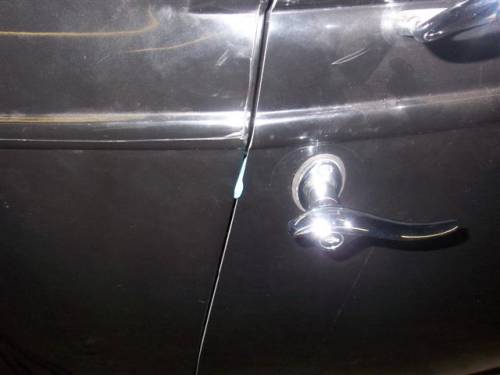It’s always a treat trying to figure out which profile of weatherstripping to use. Typically, the stuff you use for the window channel is “cat whiskers”, and is usually attached with screws or weatherstrip adhesive. Since the garnish molding is a part of the door, it’s not easy to drive a screw through the inside lip of the door (where you rest your arm while cruising). So I began to explore the different weatherstrip profiles in the Soffseal sample baggy.

I needed to detach the power window channel from the door so the glass would drop right down inside and give me clearance where I would install the weatherstrip.

If I haven’t been able to explain where I’m putting the weatherstripping, this should do the job.

With this style of seal, it’s important not to make the fit too tight between the glass and weatherstrip, or the glass won’t want to slide up and down – it will get stuck. You may have to combine two different thicknesses to get the spacing right.

The inside door panels which hide the power window motors are attached with machine screws, but there isn’t a seal preventing them from rattling. I took some sample pieces from the Soffseal sample bag and filet’d the side with the adhesive to the thickness I needed. After sticking a few of these skinny pieces around the perimeter of the panel, it keeps it away just far enough that it won’t rattle.

This is the profile I used for the window seal. I took this picture to show there is a good side and a not so good side to this piece. This profile is manufactured as two strips side by side, connected by a thin bridge. Afterwards, they are seperated. This process leaves a tiny ridge along one side (in this picture, the left side). I chose to install it with the ridge facing down.













































